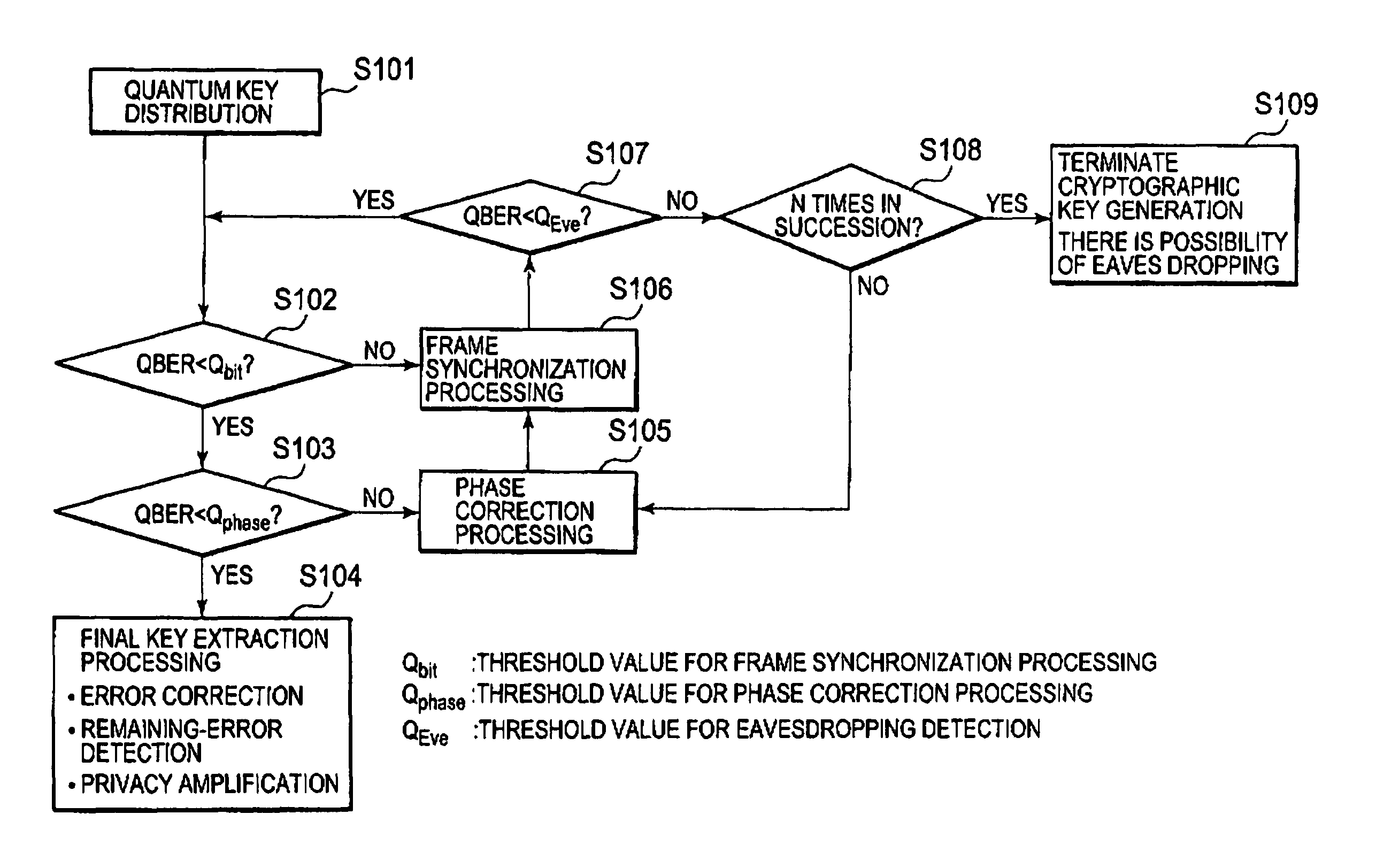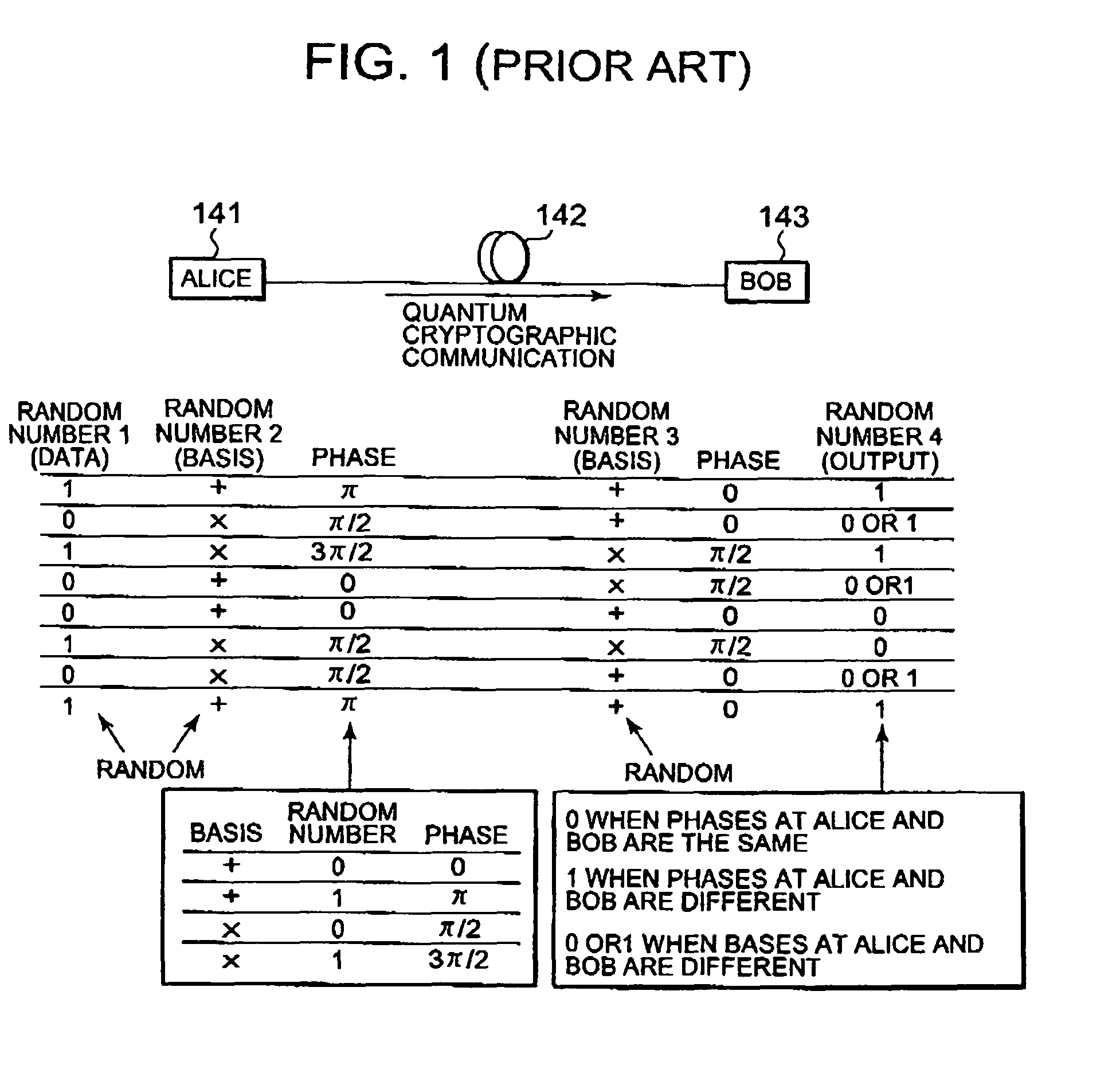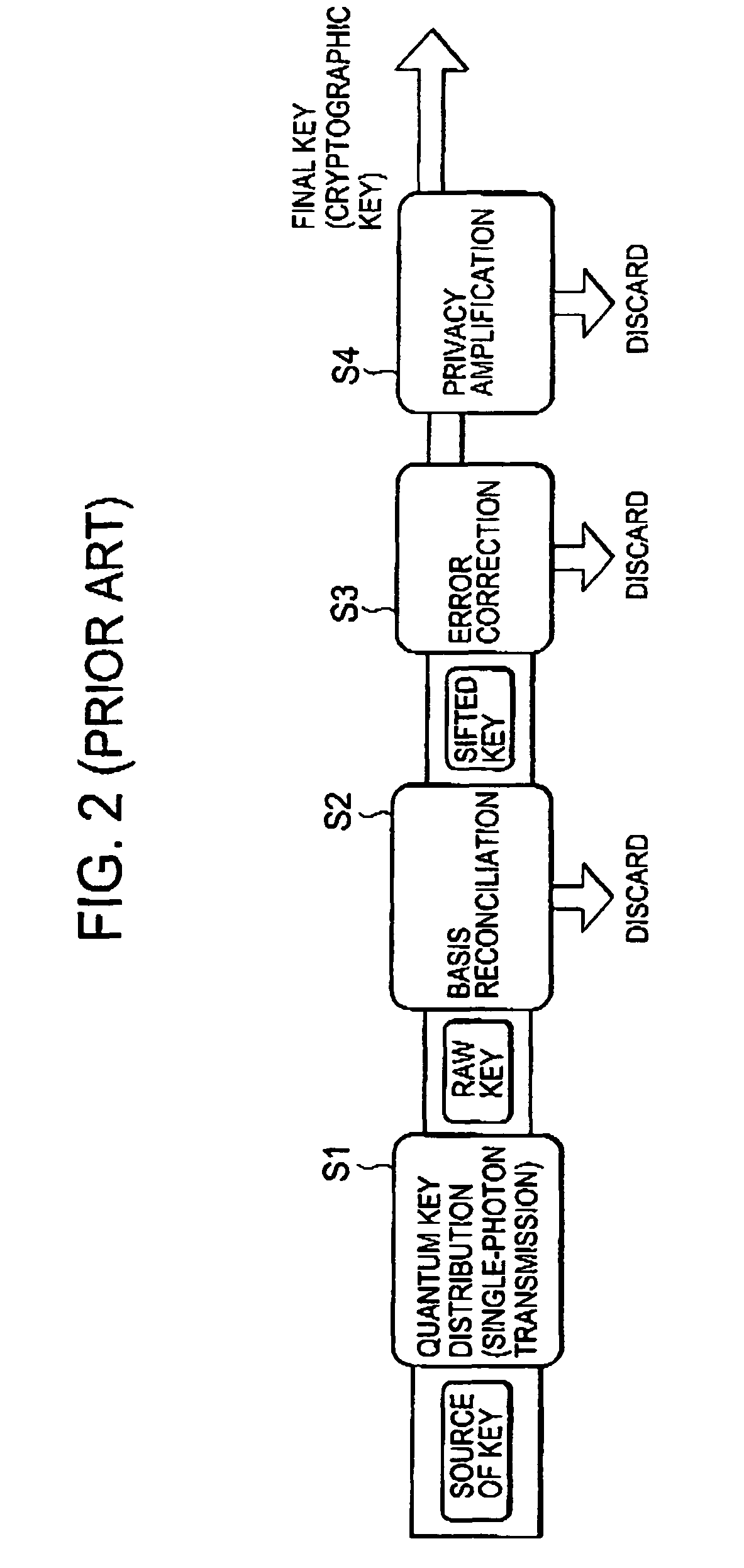Communication system and method for controlling the same
a communication system and communication technology, applied in the field of communication systems, to achieve the effect of efficient process, efficient process, and efficient operation
- Summary
- Abstract
- Description
- Claims
- Application Information
AI Technical Summary
Benefits of technology
Problems solved by technology
Method used
Image
Examples
first embodiment
3. First Embodiment
[0083]First, in a first embodiment, the following four points are assumed as factors for system faults in a quantum key distribution system.[0084](1) Frame synchronization deviation: deviation in frame synchronization between Alice and Bob or deviation in frame synchronization inside Bob.[0085](2) Modulation / detection phase deviation: deviation of a clock phase for photon-pulse modulation and / or deviation of a clock phase for photon-pulse detection.[0086](3) Presence of an eavesdropper (Eve): deterioration in the rate of cryptographic key generation due to an act of eavesdropping.[0087](4) Light source / photo detector fault: fault of a device for generating photon pulses and / or fault of a device for detecting photon pulses.
[0088]Although the details of these faults will be described later, it can be seen that different types of faults cause different levels of deterioration in the error rate QBER. Therefore, in the present embodiment, a threshold value Qbit for fra...
second embodiment
4. Second Embodiment
[0166]In the above-described first embodiment of the present invention, the detection of a system fault is performed by monitoring QBER. According to a second embodiment of the present invention, the detection of a system fault is performed by also monitoring the rate of raw key generation in addition to QBER. Note that the configuration of a quantum key distribution system to which the second embodiment of the present invention is applied is basically similar to the system configuration shown in FIG. 4, except that the monitor 212 in the receiver 20 monitors the rate of raw key generation as well as QBER.
[0167]Although the monitoring of QBER by the monitor 212 is performed as in the first embodiment, the monitoring of the raw key generation rate VR is performed by using the number of photon counts per unit time. For example, in the system of FIG. 4, when photons are sequentially detected by the Geiger-mode-driven photo detector APD0 or APD1, corresponding bits a...
third embodiment
5. Third Embodiment
[0197]In a third embodiment of the present invention, fault factors are separated by monitoring the amount of change in QBER. The configuration of a quantum key distribution system to which the third embodiment of the present invention is applied is basically similar to the system configuration shown in FIG. 4, except that the monitor 212 in the receiver 20 calculates the amount of change in QBER (hereinafter, referred to as QBER change rate).
[0198]FIG. 16 is a flowchart showing a method for controlling a communication network according to the third embodiment of the present invention. Note that steps similar to those in the first embodiment are denoted by the same reference symbols and numerals as those used in the first embodiment, and description thereof will be omitted.
[0199]Referring to FIG. 16, the monitor 212 monitors QBER as described above and calculates a difference from the past QBER stored in the memory 213, thereby calculating the QBER change rate (dQ...
PUM
 Login to View More
Login to View More Abstract
Description
Claims
Application Information
 Login to View More
Login to View More - R&D
- Intellectual Property
- Life Sciences
- Materials
- Tech Scout
- Unparalleled Data Quality
- Higher Quality Content
- 60% Fewer Hallucinations
Browse by: Latest US Patents, China's latest patents, Technical Efficacy Thesaurus, Application Domain, Technology Topic, Popular Technical Reports.
© 2025 PatSnap. All rights reserved.Legal|Privacy policy|Modern Slavery Act Transparency Statement|Sitemap|About US| Contact US: help@patsnap.com



